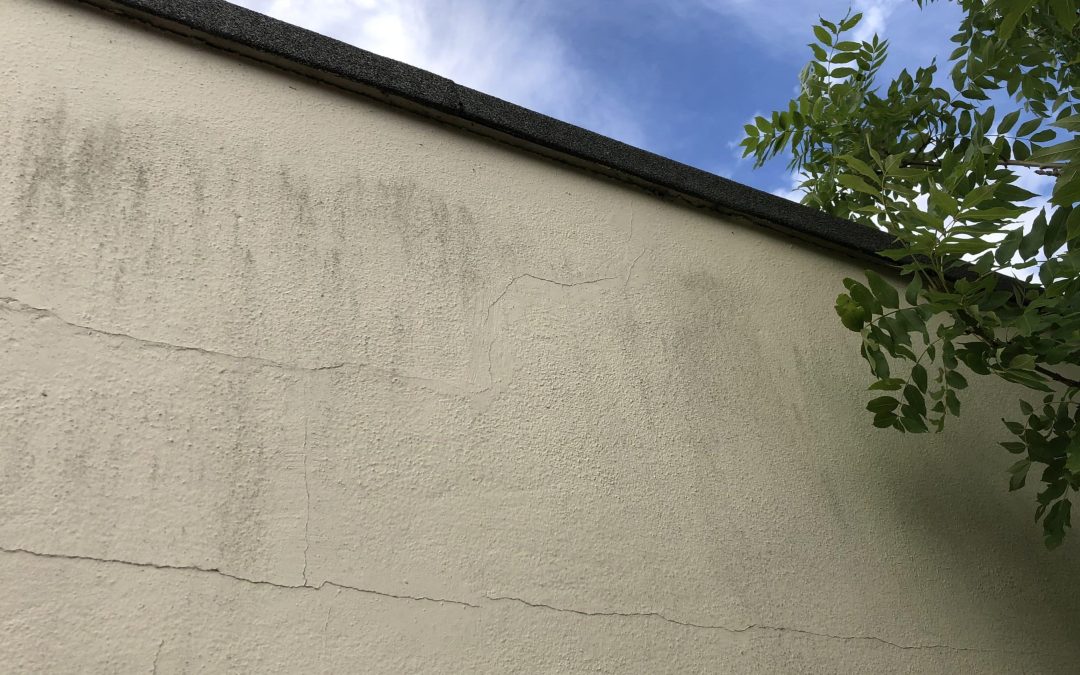For many seasoned decorators this may seem like a really simple question – you all know almost instinctively which type of paint is best for walls. But for those just starting out on their decorating journey, the amount of choice that’s available on the market these days can be quite mind-boggling.
So, let’s look at some of the different types of paint that are available, and discuss where you might (or might not) best use when decorating. And just to clarify, we’re looking at interior walls – masonry paint for outside walls is a whole different topic!
How to Choose the Right Wall Paint for Each Room
Wouldn’t it be easy if I could just point you in the direction of one type of paint and let you apply it to all your walls. It isn’t quite like that, though. Different types of wall paint suit different rooms. I’ll take you through them now.
Lounge and bedrooms
Matt emulsion is the most desirable finish for walls, and in a bedroom, lounge, snug etc, the paint doesn’t need to be overly durable. You can use durable matt, but vinyl matt emulsion is usually perfect.
Kitchens
The walls in a kitchen are subject to steam when cooking, and you occasionally need to wipe them down. Durable matt emulsion is ideal.
Hallways
I’d describe a hallway as a “high-traffic area”, which basically means it gets a lot of foot traffic. This can lead to bumps and scuffs, so a durable matt emulsion is best suited.
Bathrooms
You can use durable matt in bathrooms with a moderate amount of humidity, but if the walls in your bathroom are subject to a lot of condensation, then acrylic eggshell is better suited. If you have black mould growth in your bathroom, then select a good anti-mould paint.
Trade Paint Vs Retail Paint
If we’re talking about what is best, we should probably clarify the difference between Trade paint (generally available from Decorators’ Merchants or online) and Retail paint (generally available from DIY outlets such as B&Q).
So, just because the tin says “Dulux”, “Crown” or “Johnstone’s” on it, it doesn’t necessarily guarantee the quality of the paint inside it. Put very simply, Trade paint will almost always cost more, because it contains more of the “good stuff” – it’s been developed for professional decorators who know the difference, and know how to get the best results with it.
Retail paint is developed for DIY enthusiasts, to make their home decorating as easy and affordable as possible.

Typically, trade paint will have superior opacity because it contains a higher pigment level. This means that it will cover the existing paint in fewer coats.
Trade paint also usually contains higher levels of ingredients called “polymer binders”, which help to keep the paint film intact once it’s cured (so the paint will last longer and be better able to stand up to cleaning).
There are other technical differences which we don’t need to get into – if we’re answering the question “Which is the best paint for walls?”, the answer will always be trade paint!
So having established that the best paint for walls will almost certainly be trade paint, let’s now look at some of the different types of trade paint available, and different situations where each might be the most suitable.
The Different Types of Wall Paint Available
Now you know which type of paint is best for the walls in different rooms, I’ll quickly run through all the different types of wall paint that are available and name a couple of my favourite products.
I only use trade paint, and unless you’re entitled to a trade discount, trade paint is usually cheaper online than it is at a trade counter. The best websites are Decorating Centre Online and The Paint shed, both of which stock a variety of brands and are competitively priced.
Contract Matt
In my opinion, contract matt is rarely the best paint for walls! OK, maybe I’ll backtrack on that slightly – it depends to some extent on the situation.
Contract matt is most often used on newly built properties as the first paint applied to the new plaster. In its favour, it’s usually the cheapest trade paint available, the opacity is often decent, and it is breathable, meaning that it can be applied even if the plaster hasn’t fully dried out.
So, you can see why it’s popular with builders and decorators working in newly built properties. The downside of it is that it contains very low levels of the polymer binders that I mentioned earlier, meaning that it scuffs and marks easily. If you try to wipe marks clean with a damp cloth you will probably find you are wiping away some of the paint. So, it’s cheap, but not very durable, which is why I hardly ever use it on walls myself. Click here to see online prices.
Vinyl Matt
Vinyl matt is probably the most frequently used paint for walls, especially away from the new build scenario. Vinyl matts do contain polymer binders, but the levels do seem to vary from brand to brand. Trade paints generally have higher levels than retail paints, as mentioned above, but even within the trade paint market, different brands seem to have higher or lower levels.
I would describe the durability of vinyl matt as “wipeable” rather than “scrubbable” – the levels of polymer binders mean that you can wipe away marks with a damp cloth. But I wouldn’t recommend prolonged scrubbing, as this will damage the surface.
Therefore, vinyl matt paints are ideal for situations where the paint is less likely to suffer wear and tear – “low traffic” areas such as bedrooms, dining rooms, home offices etc.
One of my personal favourite vinyl matts is Tikkurila. It’s not ridiculously expensive, it has a relatively high level of polymer binders (making it harder wearing than many other vinyl matts), it’s lovely to use, and it dries to a nice matt finish. You can even get the colour matched to any colour from a different brand. You can buy it online here.

Durable Matt Emulsion
Hard-wearing, or Scrubbable matt emulsions have even higher levels of binders, making them more durable, but also making them more expensive. They are sold under a wide variety of different names depending on the manufacturer – “Dulux Diamond Matt”, “Clean Extreme Scrubbable Matt”, “UltraLast Matt”, etc.
These are the best paints for walls in high traffic areas, where the paint will be subjected to more wear and tear, such as hallways, stairs and landings, children’s playrooms, etc.
Often the finish is slightly shinier than with their vinyl matt equivalents, due to the polymer binders, but they are still definitely classified as matt, rather than mid-sheen.
One of the most popular hard-wearing matts is Crown Clean Extreme Scrubbable Matt. It’s reasonably priced, independently tested for its scrubbability, and is really nice to use. In fact, I know many decorators use it in many situations where they could have used a vinyl matt, just because the price differential is not that great.

Soft Sheen/Mid-Sheen/Acrylic Eggshell
These products are designed for – and ideally suited for – bathrooms and kitchens, because they deal with steam, moisture and condensation very well; some even have built-in anti-mould ingredients as well.
They are very easy to wipe down, but not everyone likes the higher sheen level; it’s a balance between functionality and appearance. If the room is going to be very steamy, or there is a likelihood of food splashes, then I would tend to opt for one of these over a matt finish – again, my personal favourite at the moment is Crown Clean Extreme Acrylic Eggshell, it really handles condensation extremely well. Click here for details.
Silk Emulsion
Silk has very much gone out of fashion these days. It used to be popular, particularly over embossed wall coverings, because the shiny surface was seen as more wipeable than matt (in the days when your only choice was matt or silk!). These days, a matt finish is usually more desirable for most people, and hard-wearing matts are designed to deal with being cleaned.
You can sometimes encounter problems painting over silk with matt at a later stage as well, so unless a customer is adamant that they want shiny walls, I tend to steer clear of Vinyl Silk these days.

Best Tools for Applying Paint to Walls
Without even touching on the whole spraying vs brush-and-roller debate, the choice of paint-applying tools is enormous. For the past few years my favourites have been ProDec Ice Fusion brushes, and Hamilton Perfection rollers. Recently I’ve also been trying the new Axus Décor Silk Touch Ultra brush, which is great in emulsion, and Two Fussy Blokes rollers – any of these tools will help get a lovely smooth finish on your walls.
FAQs
What type of paint is best for walls?
Trade vinyl matt emulsion is great for the walls in a bedroom, ounge, snug etc. Durable matt emulsion is often better for a kitchen and high-traffic areas. Acrylic eggshell is perfect for the walls in a bathroom.
Is vinyl matt better than contract matt?
Vinyl matt is more expensive, but it contains more polymer binder than contract matt. It’s a much better choice as a wall paint.
What is the most durable paint finish for walls?
Acrylic eggshell and soft sheen emulsion paints are generally them most durable. Durable matt is a step down in durability, but it leaves you with a more desirable finish.
Can you use silk emulsion in a bathroom?
Silk emulsion causes issues. It’s waterproof so you could use it in a bathroom, but acrylic eggshell is a much better choice.
Is trade paint worth the extra money?
Trade paint is 100% worth the extra money. You’ll need less coats, it’ll be more durable, and the finish will be much better.
Summary
So, the simple answer to “Which type of paint is best for walls?” is “Trade paint”! After that, it depends more on the situation, and what sort of wear and tear the paint is likely to be subjected to. The good news is that there are plenty of great options out there!











































0 Comments